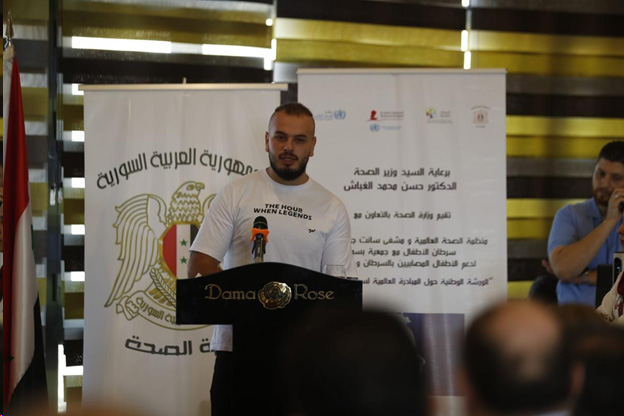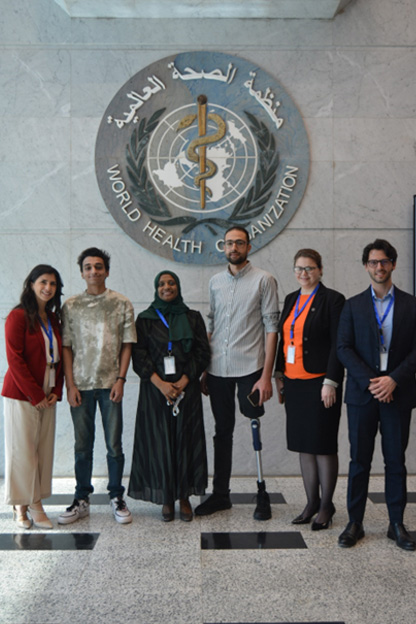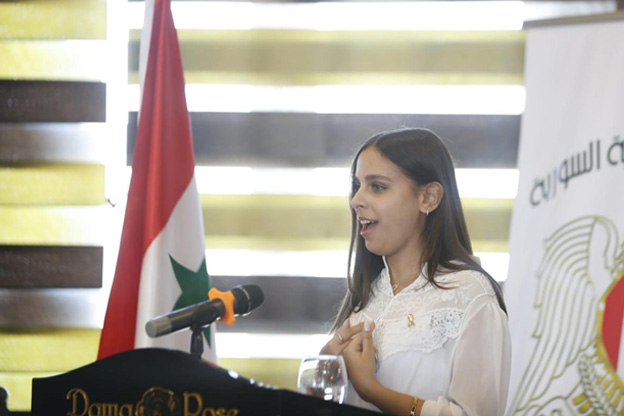 Childhood cancer survivor from Syria, Yazan, 20 years old23 September 2024, Cairo, Egypt – Yazan is a 20-year-old Syrian who was diagnosed with Ewing sarcoma as a child. The conflict in Syria and resulting humanitarian crisis meant that Yazan struggled to access treatment for his cancer, and he received little support from his school and community.
Childhood cancer survivor from Syria, Yazan, 20 years old23 September 2024, Cairo, Egypt – Yazan is a 20-year-old Syrian who was diagnosed with Ewing sarcoma as a child. The conflict in Syria and resulting humanitarian crisis meant that Yazan struggled to access treatment for his cancer, and he received little support from his school and community.
“I was denied entry to my final exams because I couldn’t climb the stairs to where the exam room was located. Yet they could easily have made an exception for me. I studied hard while being sick,” recalls Yazan.
Walid, a 29-year-old Egyptian, was diagnosed with osteosarcoma at the age of 15. He subsequently underwent an above-knee amputation. Currently working in finance, Walid wears a prosthetic leg. He feels the support for childhood cancer survivors is inadequate, especially when they reach adulthood.
 With Walid (29) and Ayman (20) , childhood cancer survivors from Egypt"My experience with the side effects of the treatment was more difficult than the cancer itself,” he says. “I could have used far more counseling and support, and with the right advice could have avoided countless operations to save my limb."
With Walid (29) and Ayman (20) , childhood cancer survivors from Egypt"My experience with the side effects of the treatment was more difficult than the cancer itself,” he says. “I could have used far more counseling and support, and with the right advice could have avoided countless operations to save my limb."
Yazan and Walid’s stories are the tip of the iceberg. They are experiences that, in the Eastern Mediterranean Region, 36 000 children under the age of 19 years face each year.
The likelihood of surviving a diagnosis of childhood cancer depends on the country in which the child lives: in high-income countries, more than 80% of children with cancer are cured, while in many low- and middle-income countries the figure is less than 30%, and many survivors go on to live with disabilities.
The survival of these children depends on the capacity of national health systems to provide timely diagnosis, early referral, appropriate treatment and disability prevention, and beyond that, on the availability of financial safety nets to protect their families from the potentially catastrophic costs associated with treatment and care. It is an enormous challenge in a Region where many national health systems are fragile, have interrupted supply chains, weak referral systems, chronic shortages of specialized health workforce and provide fragmented and incoherent service delivery.
Through the Global Initiative for Childhood Cancer (GICC), launched in 2018, WHO and the St Jude Children’s Research Hospital in Memphis, USA, work with national and international partners towards the ambitious yet attainable goal – to ensure that worldwide, at least 60% of children with cancer are cured, and suffering is reduced to a minimum.
Recognizing the value of the GICC in sustaining broader efforts to achieve the Sustainable Development Goals and universal health coverage, ministers of health from Egypt, Jordan, Lebanon, Morocco, Pakistan, the occupied Palestinian territory and Syria joined the Initiative and committed to scaling up interventions across the Initiative’s CureAll framework.
They include:
streamlining governance mechanisms around childhood cancer, bringing together all relevant stakeholders at the national level, and enabling them to carry out key actions guided by national childhood cancer strategies;
building the capacity of professionals across the care continuum to ensure early detection and timely management of childhood cancer through effective referral networks at national and subnational levels;
standardizing the diagnosis and treatment of children with cancer across public and private health facilities, and between urban and rural areas, to ensure that children receive the same, high-quality treatment regardless of where they live; and
strengthening supply chain systems to avoid shortages of life-saving medicines, including through the implementation of the Global Platform for Access to Childhood Cancer Medicines and the development of essential lists of childhood cancer medicines.
 Childhood cancer survivor from Syria, Maya, 22 years old.While continuing to invest in childhood cancer research and work alongside other partners, governments need to ensure free care for all children affected by cancer. Families play a crucial role in the fight against childhood cancer but the financial toll can be overwhelming. Free treatment for childhood cancer and support for families makes an enormous difference in terms of improving health and quality of life.
Childhood cancer survivor from Syria, Maya, 22 years old.While continuing to invest in childhood cancer research and work alongside other partners, governments need to ensure free care for all children affected by cancer. Families play a crucial role in the fight against childhood cancer but the financial toll can be overwhelming. Free treatment for childhood cancer and support for families makes an enormous difference in terms of improving health and quality of life.
Children with lived experience with cancer and their families should play a vital part in the design, implementation and follow-up of programmes. Their input should help determine our priorities, and their presence elevates the sense of urgency. People with lived experience must be given the space to voice their concerns about what was not addressed during or after their cancer journeys. Allowing them to use their experiences to enhance cancer care and help other children is extremely powerful.
Childhood Cancer Awareness Month is a reminder of the ongoing battle against this devastating disease. By coming together each September, we not only raise awareness and celebrate the strength and resilience of young people with cancer, we recognize that with the right levels of support and advocacy we can move towards a future in which no child is left behind, regardless of where they were born.
Resources
CureAll Framework (The Global Initiative for Childhood Cancer (who.int))


